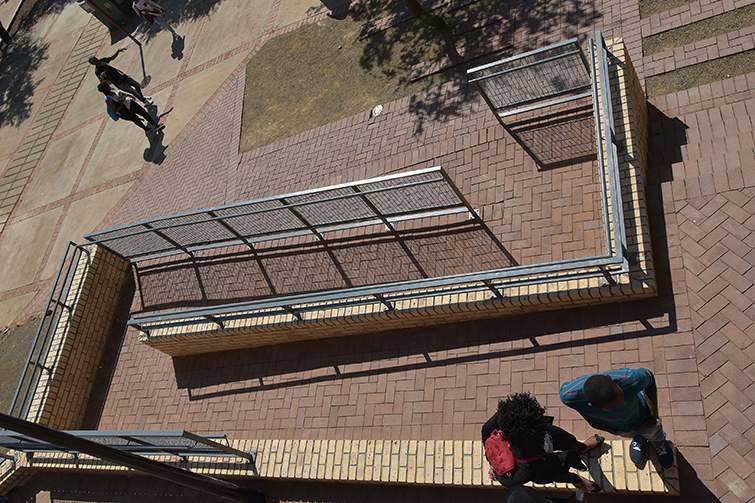17 March 2021
|
Story University Estates
|
Photo UFS Photo Archive
 The UFS is committed to providing inclusive and accessible living, teaching, and learning spaces that are welcoming to all.
The UFS is committed to providing inclusive and accessible living, teaching, and learning spaces that are welcoming to all.
In accordance with its vision to be a university that is recognised across the world for excellence in academic achievement and human reconciliation, the University of the Free State (UFS) is committed to providing a universally accessible environment
for all students, staff, and visitors on all three of its campuses.
A sense of belonging and togetherness
Creating an accessible environment that is conducive and welcoming to everybody on the campuses – which were not designed with accessibility in mind – is not an easy task. When the principles of universal design and access are applied, the
environment and spaces can be enjoyed by all users alike, creating a sense of belonging and togetherness. The common perception that accessibility only provides equitable access and opportunities for persons in wheelchairs is refuted by universal
access, stating that it is to the advantage and for the use of everybody. Parents with infants in strollers, delivery persons with trolleys or carrying heavy material, library patrons carrying an armful of books, academic staff with wheeled (rolling)
laptop bags, and older people all benefit from the availability of a ramp, elevator, or automated door.
The current accessibility project of the UFS was initiated in 2009, evaluating the accessibility status of the UFS at the time. Priority inaccessible areas and spaces were identified and listed to be converted and improved over a period of five years,
revising the list every year. The focus of the project was primarily on areas and spaces where most student activities take place, where specific needs and challenges have been identified, and where specific departments/divisions of the UFS have requested
the improvement of access. The project does not only include access to buildings, but also accessible bathrooms, sufficient accessible parking spaces, accessible walkways, and accessibility within the classroom. The emphasis of the project is not
only on wheelchair users and persons with mobility impairments, but also on creating an environment that can easily be navigated and used by everybody.
All new infrastructure incorporates accessibility measures
University Estates updated the accessibility reports mid-2020 and identified project priorities up
to 2024. Among other things, the key focus areas were to make all walkways wheelchair-friendly, to create ablution facilities for persons with disabilities, to install lifts in buildings, and to install ramps. All new infrastructure by default incorporates
accessibility measures in the planning stage.
On the South Campus, ramps were installed around the campus and pathways were made wheelchair-friendly. Entrances to existing lecture halls and other buildings have also been made more user-friendly for persons with disabilities. Additional to the above-mentioned
initiatives, the institution has also embarked on a project that seeks to assist the visually impaired to better navigate the campus.
For our Qwaqwa Campus, immediate critical interventions that are in the planning stage and that should be done within the next year, are the creation of accessible ablution facilities in the Administration Building, library, and the Humanities and Education
buildings.
WATCH video below: